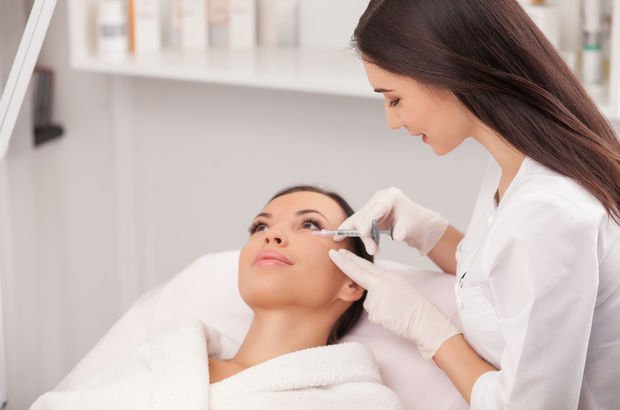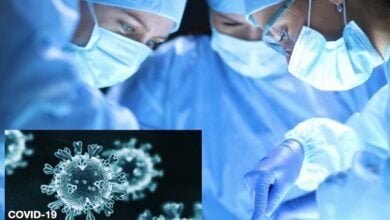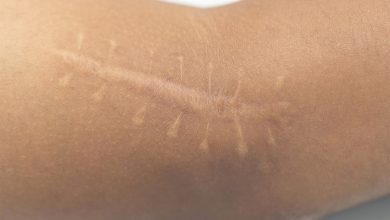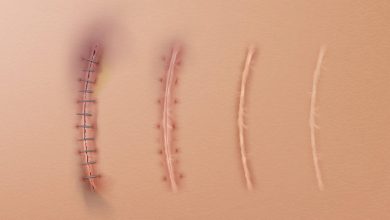What Does Plastic Reconstructive And Cosmetic Surgery Mean?
*In our country, Aesthetic Plastic and Reconstructive Surgery is the name of a 5-year residency program that can be studied after passing the Examination for Specialty in Medicine following the graduation from the Faculty of Medicine. The origin of the word “plastic” used in the terms “plastic surgery” comes from the Greek word “plastike,” which means shaping or reshaping. Plastic surgery involves the correction of “shape” and “function” of congenital or acquired deformities in the human body from the skull to the toes.
The fields of plastic surgery includes the treatment of congenital facial and skull deformities, cleft lip and palate, jaw deformities, auricle deformities, congenital hand and body anomalies, congenital tumors, soft tissue masses, and moles. Aesthetic or cosmetic surgery, on the other hand, is a subgroup of plastic surgery that mostly focuses on improving the aesthetic appearance through procedures such as nose, face, breast, or body reshaping.
Aesthetic surgery is intended to obtain a more ideal, younger and more beautiful appearance in terms of aesthetics, even if the functions are normal. For example, rhinoplasty performed on an aquiline nose or mammoplasty performed on a sagging breast improves the appearance of the organ, enabling the person to feel better. The word reconstruction can be defined as rebuilding or restoration.
Reconstructive surgery involving the use of a variety of surgical techniques deals with the restoration of the previous forms and functions of structures that have lost their integrity due to burns, injuries or tumor removal. The fields of reconstructive surgery include but not limited to repairing the bones of a person whose facial bones were broken in a traffic accident with plate and screw systems, reattaching a severed finger or hand performing microsurgical procedures, replacing skin parts destroyed due to burns, repairing deformities that develop after a burn, and reconstructing the area by eliminating tissue deficiencies with graft placement after tumor removal.
How to Become an Aesthetic Plastic Surgeon?
In our country, persons who have received the title of Medical Doctor after completing the 6-year Medical Faculty education take the Examination for Specialty in Medicine, which is conducted throughout Turkey with a system similar to that used for the university entrance exam, and then they make their residency program preferences based on their scores.
There are many branches that provide residency programs in medicine, one of which is the 5-year residency program provided by the Department of Plastic, Reconstructive and Aesthetic Surgery. Plastic surgery training, which is most preferred by general practitioners and which physicians with the highest scores can gain the right to receive, is a physically and mentally demanding and difficult process.
Here’s an example from my own career: After graduating from Kuleli Military High School and GATA Faculty of Medicine with the second highest rank, I got the highest score among military physicians in the Examination for Specialty in Medicine, which entitled me to receive residency training in the branch of Aesthetic Plastic and Reconstructive Surgery. Physicians who successfully complete this program are awarded the title of Plastic, Reconstructive and Aesthetic Surgery Specialist.
After becoming a specialist, many experts keep studying by participating in 1-2-year “research fellow” programs in reputable centers abroad to gain more in-depth training in a particular field. I did the same by working as a research fellow for a period of 1 year at the University of Texas Southwestern Medical Center in Dallas, TX, USA. It is the only medical residency program that includes the word “aesthetics.”
Doctors who claim to be plastic surgeons just because they have participated in some short-term courses or programs instead of the intensive training mentioned above should not be equated with real aesthetic plastic surgery specialists. Operations performed by incompetent people can cause serious problems that are difficult to correct. Therefore, you need to make sure that the doctor who will perform the surgery is a true Aesthetic Plastic and Reconstructive Surgeon.
What are the Subjects of Aesthetic Surgery?
In general, the subjects of Aesthetic Surgery can be listed under the main headings of facial aesthetics, mammoplasty and body contouring. Facial aesthetics include forehead lift, eyebrow lift, blepharoplasty, face lift, facial rejuvenation, rhinoplasty, malar augmentation, genioplasty, jowl-neck lift, lip enhancement, otoplasty, and hair transplantation.
The main heading of mammoplasty includes surgical procedures such as gynecomastia surgery, breast reduction, breast augmentation with silicone implants, breast lift, breast lift plus breast augmentation, and nipple reduction.
The main heading of body contouring primarily includes abdominoplasty (tummy tuck), mini abdominoplasty, liposuction, fat injection, buttock reshaping (gluteoplasty) surgery, leg reshaping surgery, and genital cosmetic surgery (GCS). Surgical procedures performed to improve the appearance of wound and incision scars caused by previous injuries, burns or surgical operations, and self-harm scars are also an important part of aesthetic surgery.
The medical term for aesthetic nose surgery is rhinoplasty. In addition to the deformities of the nose, nasal septum deviation and concha hypertrophy (enlarged nasal concha) problems that may cause difficulties in nasal breathing can also be eliminated. In cases where the nasal bones are normal but the structures constituting the nasal tip are deformed and wider than normal, an aesthetic surgery intended to correct the nasal tip that we call tip rhinoplasty is performed. In this procedure, the nasal bones are not touched or they are only slightly rasped down.
Through mammoplasty, the breast’s shape is made more aesthetic, the nipple is lifted to the level where it should be, and its volume is changed. By removing tissue from large breasts, breast volume is reduced, that is, breast reduction operation is performed, while breast augmentation surgery is performed with silicone implants to increase the sizes of small breasts.
Under the heading of facial rejuvenation, procedures such as face lift, eye bag removal, fat injection into the dimpled areas of the face, eyebrow lift, and forehead lift, are performed alone or in conjunction with any other procedures depending on the situation.
Excess fat deposits disproportionately stored in the body of normal-weight people, which cause contour disorders, are removed by liposuction.
Skin sagging and loosening of the abdominal muscles in the abdominal region due to child births and weight gain and loss are treated by abdominoplasty (tummy tuck). In cases where the excess skin is mostly below the navel, a mini abdominoplasty operation that involves only this area is performed, and the adjacent areas can be reshaped with liposuction.
Silicone implants can be places or fat injections can be performed for butt augmentation. Both surgical procedures have a high risk of complications and require a vast accumulation of knowledge and experience. The amount of injection and the technique used are very important especially in butt augmentation with fat injection.
In addition to surgical procedures, the practices of plastic surgeons also include some non-surgical procedures performed in a doctor’s office setting such as ready-made filler injection, laser applications, chemical peeling, etc.
Why is Aesthetic Surgery Performed?
Aesthetic surgery procedures are frequently performed to make the structures in the face, breast, and body look more aesthetic, younger and more dynamic. A young woman with an extremely deformed nose, a young girl with undeveloped breasts, a young man with breasts larger than normal, a middle-aged person with a face that looks old and tired, or a woman with sagging and deformities in the breasts and abdomen after several childbirths may lose their self-confidence and suffer negative consequences in their social lives.
Eliminating these problems and achieving a more attractive appearance through surgeries can lead to extremely positive changes in these people’s self-confidence and psychology.
Mental health is as important as physical health, so it is undeniably important that plastic surgery can give a normal appearance to a child or adolescent who has serious deformations and is mocked by their peers. On the other hand, the number of people who apply to aesthetic plastic surgeons in order to meet some aesthetic norms imposed on individuals by popular culture and to become more beautiful and more attractive, even though they do not have obvious deformations is increasing every year.
Who Are Suitable Candidates for esthetic Plastic and Reconstructive Surgery?
Physically and mentally healthy individuals with a significant deformation that adversely affects their psychological state, who have completed their both physical and mental development, are suitable candidates for esthetic plastic and reconstructive surgery. Candidates considering aesthetic surgery are expected to be aware of the potential risks and complications of the surgery, to communicate properly with the physician in the preoperative and postoperative periods, and to fulfill their responsibilities.
On the other hand, those with serious psychological or physical diseases, those with perfectionist or have a narcissistic personality, and those with unrealistic expectations from plastic surgery are not suitable candidates for plastic surgery procedures. It should also be kept in mind that plastic surgery is not a magic wand that can solve all the problems in life.
How are the Preoperative and Postoperative Processes of Aesthetic Plastic and Reconstructive Surgery?
A successful aesthetic plastic surgery process can be discussed in 3 main sections: Preoperative, surgical and postoperative processes. In the preoperative period, the plastic surgeon determines whether the person who presents with any aesthetic complaints is a suitable candidate for plastic surgery. A non-emergency plastic surgery should be performed when the patient is physically and mentally at his/her best.
Drugs and nutritional supplements that may cause negative side effects during the operation should be avoided during the preoperative period, and problems such as anemia and hypertension should be managed carefully. Aesthetic procedures should not be considered simple and should be performed in licensed operating rooms with sterility conditions and all types of medical support equipment.
It is of great importance to strictly follow the physician’s recommendations in the early postoperative period and not use drugs or nutritional supplements without the physician’s approval. It is of vital importance to be informed about potential complications and to inform the surgeon who performed the surgery without delay if anything goes wrong.
In the postoperative period, there should be a companion to help you with your daily needs. Adequate fluid and food intake should be ensured. Physician’s recommendations regarding rest should be followed and physical activities that may strain the body before time should be avoided.
It is normal to have a depressed mood in the first days of the postoperative period. In this period, the aesthetic result does not fully appear due to swelling, bruising and edema, so you need to be patient. In the weeks after the operation, the aesthetic result looks better as the edema subsides and the tissues settle in their place. It takes 1 to 2 year for the incision scars to take their final form.
After the operation, you should have periodic examinations on the dates to be determined by the plastic surgeon and should act in accordance with his/her recommendations. If a revision surgery is required in the surgical area, you should wait an adequate period of time.
Professor Cengiz Açıkel, MD, Specialist Plastic, Reconstructive and Aesthetic Surgeon
After completing his residency training in GATA (Gulhane Military Medical Academy), Department of Aesthetic Plastic and Reconstructive Surgery, Professor Cengiz Açıkel, MD worked as a research fellow at the University of Texas Southwestern Medical Center in Dallas, TX, USA between 2002-2003, and became an associate professor of medicine in 2005. In 2009, he voluntarily retired from the Medical Corps of the Turkish Armed Forces with the rank of Assoc. Prof senior colonel, and continued his academic career as a faculty member at Acıbadem University Faculty of Medicine. Since 2014, Professor Cengiz Açıkel, MD has worked in his private clinic in Ataşehir district of the Anatolian side of Istanbul.





